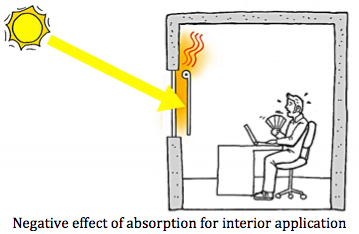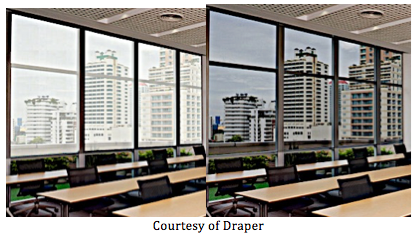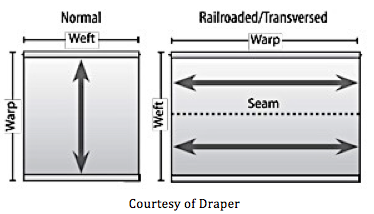Looking through any binder of solar shade fabric cards can make selecting the perfect fabric for a project a daunting task. There are so many things to consider such as the openness of the weave, the color, the content and the fabric width. These choices are all dependent on the purpose of the fabric and where it’s being installed. Is the fabric for an interior or exterior application? Which orientation are the windows facing? Is the shade fabric to help reduce glare or solar heat gain or both? Is there a specific color range you must use?
Reading the Card
Every solar shade fabric manufacturer publishes a fabric card that shows on the front side an actual neilple of the fabric along with the various color choices. However, the back of the card is where the performance of the fabric is documented. The data above is for a 105” wide fabric with 14% openness, suitable for either interior or exterior applications. The fabrics are listed with the lightest color first XT-3701 (white) and the darkest color last XT-3706 (black).
The data above is for a 105” wide fabric with 14% openness, suitable for either interior or exterior applications. The fabrics are listed with the lightest color first XT-3701 (white) and the darkest color last XT-3706 (black).
 The next column shows TS, which stands for the amount of solar heat gain transmitted through the glass and fabric. RS is the portion reflected and AS is what is absorbed by the fabric. These three numbers equal 100% of solar energy measured at the window.
The next column shows TS, which stands for the amount of solar heat gain transmitted through the glass and fabric. RS is the portion reflected and AS is what is absorbed by the fabric. These three numbers equal 100% of solar energy measured at the window.
You will notice that the darker the fabric, the higher the rate of absorbance. For example in the black color (XT-3706) the rate is 81%. For an interior application, the fabric is becoming a radiator of heat into the room. That may be a reason to select a lighter color such as white (XT-3701), which only absorbs 14%.
Glare
The column TV stands for light transmitted. This is used for the measurement of glare. This number gives the total percentage of light radiated through the fabric. The higher the number the more light passes through the fabric, which typically means more glare. Therefore, if the reduction of glare is required, then selecting a darker color fabric would allow more of the light to be absorbed with a significant reduction in glare.
Shading Coefficient
The last two columns show the measurement of the shading coefficient, which is the ratio of solar heat gain passing through the glass and fabric. The first column is for an exterior installation and the second for interior. Let’s first look at the last column and compare a white (XT-3701) to a black (XT-3706) for the interior. The white color will allow 41% of the solar heat gain (SHG) to enter the space while the black color allows 71%. This makes sense because the light color reflects the light and the dark color absorbs it where it converts to heat.
Now, let’s look at the neile two fabrics for the exterior and we see something completely the opposite. The white color performs well, only allowing 32% of SHG (this improvement over the interior application has to do with the exterior installation). However, the black fabric shows an even better performance of 23% SHG. Why is this? With the fabric installed on the exterior the absorption rate of 81% is an advantage since the heat is being radiated into the atmosphere and not into the interior space.

Transparency
One main reason for the popularity of solar shade fabrics is the ability to see through the fabric. Choosing a darker color fabric will provide better visibility since the light is being absorbed by the darker color and reducing the glare.

Content
The window covering industry has been using Polyvinyl Chloride (PVC) in many of its products for decades. According to Greenpeace, PVC is the most environmentally damaging plastic. Many manufacturers are now offering PVC free fabrics that meet a large range of solutions.
Fabric Width
One last option in selecting a solar shade fabric is the width. The fabric analyzed above is 105” wide and is heat weldable. This means if the opening is wider then 105”, the fabric can be turned (railroaded) and if needed seamed with a heat weld to make it longer then the 105” which is now its height.

So Many Options
Selecting the proper solar shade fabric typically involves making compromises. A lighter color fabric may work well from a design perspective, however the result may be too much glare. That neile dark fabric may reduce glare, but may radiate too much heat into the room. Manufacturers are adding new twists to their offerings with black color interior fabrics that absorb less heat or fabrics with aluminum coatings that make compromises on color unnecessary. Working with an expert will help making these decisions less overwhelming.
